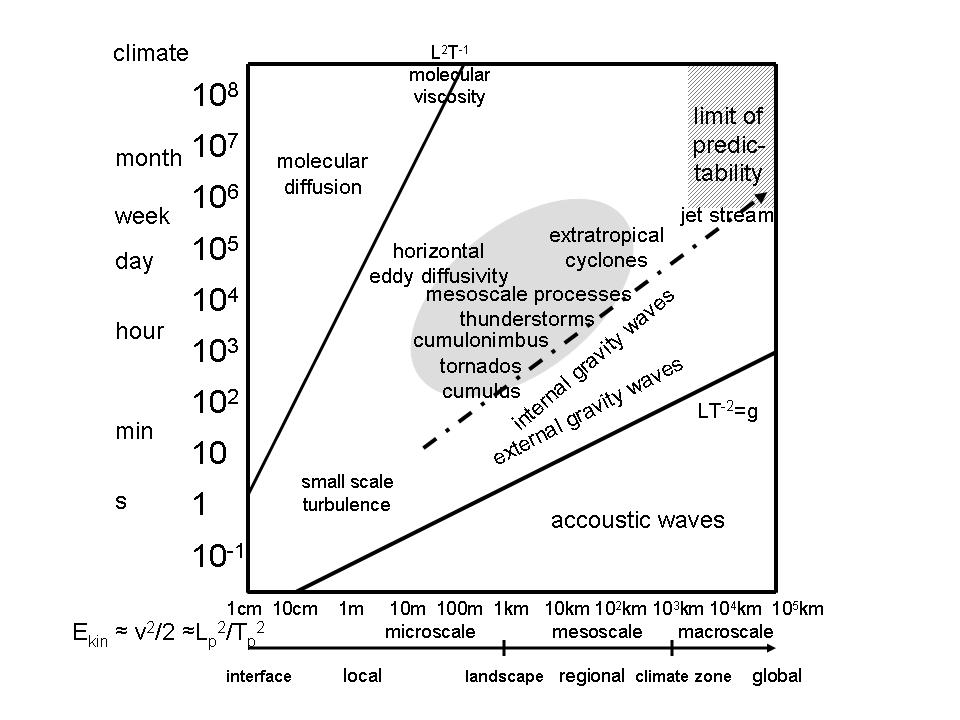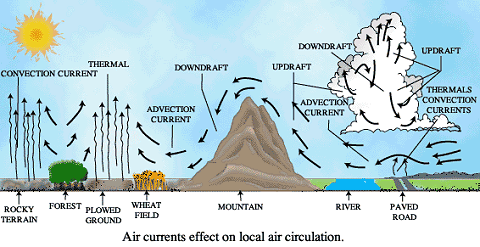Introduction to mesoscale dynamics – basic concepts, analysis of data
This unit provides a definition of mesoscale dynamics including the definitions of atmospheric scales. It provides a board overview of energy generation and interaction among scales. It provides a brief review of the basics concepts of the derivation of the governing equations and their approximations. Furthermore, the concept of predictability is introduced.

Learning goals
After completion of this unit, students will be able to
- Define mesoscale dynamics
- Name the scales and the atmospheric weather processes that occur at these scales
- Explain the energy cascade
- Explain predictability
- Apply various parameters that access the importance of different processes to each other (e.g. Scorer-, Reynolds-, Froude-, Rossby-number, etc.)
- Perform a scale analysis (graduate students)
- Perform Reynolds averaging (graduate students)
Students’ tasks
Note that throughout this class student’s task differ for ATM478 (undergraduate students), and ATM678 (graduate students). Thus, make sure to perform the tasks required at the level at which you take Mesoscale Dynamics. Tasks indicated as all or without specification have to be performed by all students.
By Thursday 2359 please
- Introduce yourself to your classmates on slack.
- Read Lin, Mesoscale Dynamics, Chapter1 and 2 (all)
- Read Chapter 7.1.3 in Lectures in Meteorology
- Watch this video (all)
- Fill out this questionnaire (undergraduate students)
- Watch this video on Reynold averaging (graduate students)
- Solve the tasks assigned at your class level in this Unit 1 application sheet, scan you work in as a pdf file, name the file Firstname_Lastname_unit_1.pdf (here Firstname and Lastname are place holders for your own first name and last name) and submit it to cmoelders@alaska.edu.
Supplemental Material
Reynolds averaging and example: Read Mölders and Kramm, Lectures in Meteorology, Sections 6.8.1-6.8.2 on Reynolds averaging and the Boussinesq approximation as an example for its application,
Example of scale analysis: Read Mölders and Kramm, Lectures in Meteorology, Section 6.4.1 for an example of scale analysis applied to the hydrostatic equation.
© Nicole Mölders 2019 | All rights reserved
